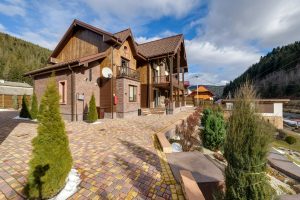Eco-Friendly Homes: Sustainable Living Made Beautiful
In the face of climate change and depleting natural resources, there has been a growing focus on finding sustainable solutions for our everyday lives. One of the biggest contributors to environmental degradation is our homes. However, with the rise of eco-friendly homes, it is now possible to have a beautiful and comfortable living space while minimizing our impact on the planet. Let’s explore how sustainable living can be made beautiful with the help of eco-friendly homes.
The Concept of Eco-Friendly Homes
Eco-friendly homes, also known as green homes, are built using sustainable materials and energy-efficient processes. These homes are designed to reduce the impact on the environment by conserving natural resources and reducing carbon emissions. They also promote healthier living by using non-toxic, environmentally friendly materials. The concept of eco-friendly homes is not just limited to the construction process but also extends to the daily practices and habits of the occupants.
Designing for Sustainability
The design of an eco-friendly home starts from the ground up, with careful consideration of the materials and techniques used. The use of recycled or renewable materials such as bamboo, reclaimed wood, and cork for flooring, countertops, and furniture not only reduces waste but also adds a unique touch to the home’s aesthetic. The orientation of the house is also crucial in optimizing natural light and ventilation, reducing the need for artificial lighting and air-conditioning.
Energy Efficiency
Eco-friendly homes are designed to use energy as efficiently as possible. This includes using energy-efficient appliances, LED lighting, and even installing solar panels for renewable energy. The design of the house also plays a significant role in energy efficiency. Features such as roof overhangs to provide shade, high-performance windows, and insulation can reduce the need for heating and cooling, resulting in lower energy consumption and utility bills.
Water Conservation
Conserving water is also an essential aspect of sustainable living. Eco-friendly homes incorporate features such as low-flow toilets and faucets, rainwater harvesting systems, and greywater recycling systems to reduce water usage. In addition, drought-tolerant landscaping and the use of native plants can also greatly reduce the need for irrigation.
Indoor Air Quality
Indoor air quality is often overlooked but is vital for creating a healthy living space. Eco-friendly homes use materials with low or no VOC (volatile organic compound) emissions, which can cause health problems. Proper ventilation is also incorporated to improve air circulation and reduce the buildup of pollutants indoors. Additionally, incorporating natural elements such as indoor plants can also help improve indoor air quality.
The Benefits of Eco-Friendly Homes
Aside from the positive impact on the environment, there are many benefits to living in an eco-friendly home. The reduced energy and water consumption result in lower utility bills, making it a more cost-efficient option in the long run. The use of sustainable materials also means less exposure to harmful chemicals, resulting in a healthier living environment. Moreover, eco-friendly homes have been found to have a higher resale value, making it a smart investment for homeowners.
Challenges and Solutions
Despite the benefits of eco-friendly homes, there are challenges that come with implementing sustainable living practices. One of the main challenges is the initial cost of construction, which can be higher compared to traditional homes. However, this cost can be offset by the long-term savings in energy and water bills. Additionally, with the growing demand for eco-friendly homes, there are now more options and resources available to make it a more affordable option.
In Conclusion
Eco-friendly homes offer a beautiful and sustainable solution for modern living. With careful planning and design, these homes can not only reduce our impact on the environment but also provide a healthier and more cost-efficient living space. By choosing to live in an eco-friendly home, we can take a step towards sustainable living and make a positive impact on the planet, one home at a time.











